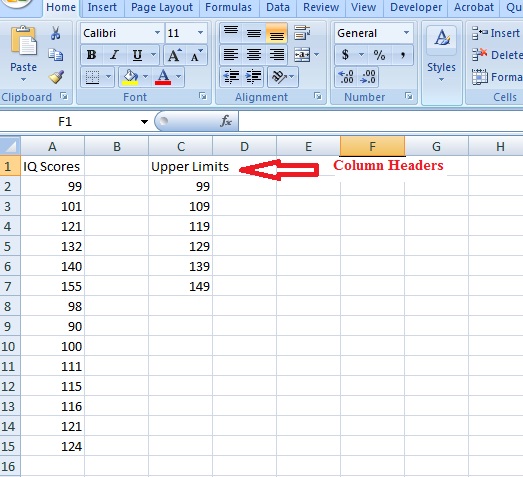

- #FREQUENCY TABLE FOR A RANGE OF TABLE MICROSOFT EXCEL 2011 HOW TO#
- #FREQUENCY TABLE FOR A RANGE OF TABLE MICROSOFT EXCEL 2011 CODE#
- #FREQUENCY TABLE FOR A RANGE OF TABLE MICROSOFT EXCEL 2011 SERIES#

Cases 3, 4, 6, and 8 own a laptop and a phone.Īn important task when working with check-all-that-apply questions is being able to say how many people did not answer the question.Cases 1, 2, and 5 own a laptop and a phone and a tablet.In plain language, the data used in both examples: In these examples, the columns represent the answers to a check-all-that-apply question, "Which of the following devices do you own?", with four answer options: laptop, phone, tablet, or "other". The following two examples demonstrate both schemes using the same underlying data. Numeric codes representing present and not present (such as 0=Absent, 1=Present).
#FREQUENCY TABLE FOR A RANGE OF TABLE MICROSOFT EXCEL 2011 CODE#
Numeric code (typically 1) if present, blank (missing) if not present.The data values should follow one of these two schemes:.If they are string, you will need to convert them to numeric codes (see the Automatic Recode procedure). The multiple response variables should be numeric.For a given multiple response question, each answer option should be represented in a separate column (variable).Each row (case) should represent one subject, survey response, or experimental unit.To properly analyze multiple response questions in SPSS, your dataset should have the following structure:

If a person selected that option, they are assigned a "1" for that variable if they did not select that option, their data value is left blank (or is assigned a number code indicating non-selection).
#FREQUENCY TABLE FOR A RANGE OF TABLE MICROSOFT EXCEL 2011 SERIES#
For example, we could restructure this question into a series of single-choice, "Yes or No" questions: However, this is not the case for multiple response questions: each checkbox functions like a "Yes or No" question. On its surface, it looks similar to "single-choice" multiple choice questions, which can be summarized using (univariate) frequency tables. This particular question type is deceptively simple. Selects "phone" and "other" types "mp3 player" in the write-in box We might create a survey question like this one:Īs individual users complete the survey, their selections might look like this: For example, suppose we are interested in surveying a group about what types of electronic devices they own, and suppose we are especially interested in the three most common types of mobile computing devices: laptops, phones, and tablets. In this tutorial, we will focus on a specific type of multiple response set: multiple response (or "check-all-that-apply") questionnaire items.Ī multiple response question presents a list of possible answer options, and the respondent selects all options that are true for them. Multiple response sets occur when you have a set of related choices or characteristics in which a subject or experimental unit can possess one or more of those characteristics.
#FREQUENCY TABLE FOR A RANGE OF TABLE MICROSOFT EXCEL 2011 HOW TO#
This tutorial is a primer on how to work with data from multiple choice, multiple-response (or "check all that apply") questions in SPSS Statistics.


 0 kommentar(er)
0 kommentar(er)
